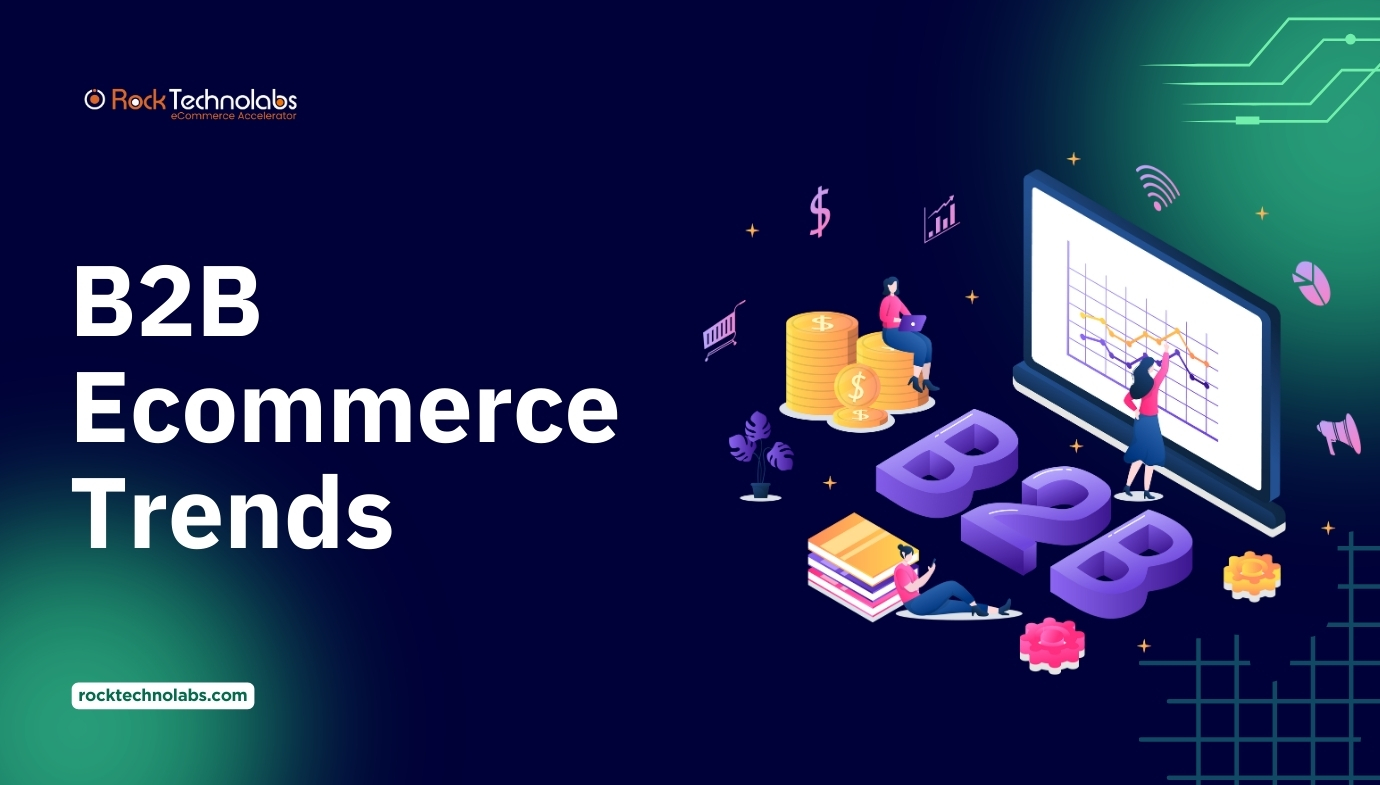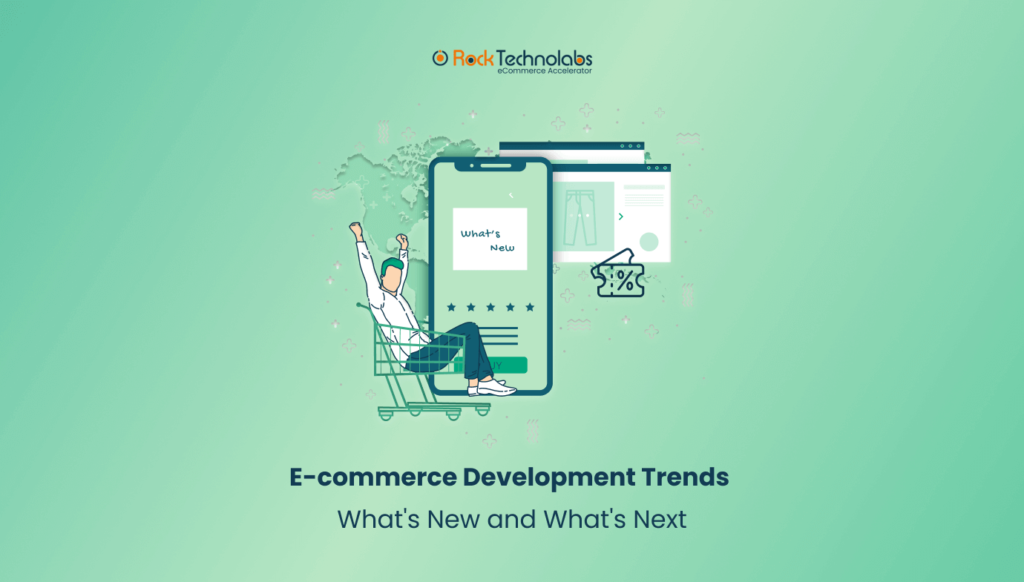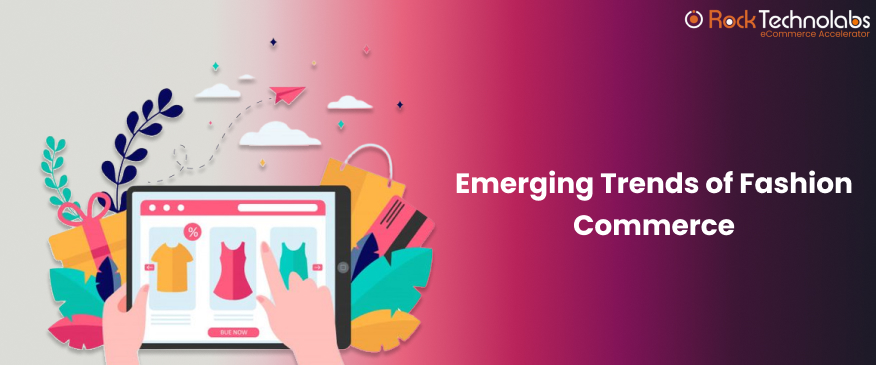Like in B2C, the B2B eCommerce world is changing rapidly. Recent trends have completely transformed B2B commerce from a purely offline model to a dynamic digital first model.
The value of B2B eCommerce skyrockets to $18.8 trillion: This number highlights the B2B eCommerce market’s tremendous potential and offers chances for emerging brands to succeed.
So what is B2B commerce anyway?
The term “business to business” (B2B) referred to exchanging, or trading, of goods and services between businesses rather than between businesses and consumers.
B2B is not the same as B2C, which focuses instead on individual customers; orders are significant, negotiations are often lengthy, and greater importance is placed on relationship continuity.
Decision makers are using new channels (like social media) to discover new products. And are increasingly moving towards “self service” services with ease.
Which is changing how B2B brands sell their products and services.
Here are some of the most important b2b ecommerce trends happening in 2025 and beyond. The movements in the B2B space are inevitable; hence, this will help to future-proof your strategies and align to those advancements.
Be it AI powered personalization or sustainability initiatives; let’s dive into everything that is shaping the future of B2B commerce.
Let’s see what happened to B2B eCommerce in 2024
- Digital Commerce reported 2024 forecasts: B2B ecommerce to reach $2+ trillion.
- Despite a slowdown in overall eCommerce growth, B2B online sales remain a bright spot.
- By 2025, Gartner expects 80% of B2B sales are expected to be generated digitally, up from 13% in 2019.
- According to Statista reports, Digital channels will account for 56% of B2B revenue by 2025, prompting 1 in 5 companies to invest in eCommerce experiences.
11 Most Important B2B E-commerce Trends to Watch Out for in 2025
B2B businesses can boost engagement, effectiveness, and sales by these b2b commerce trends.
1. B2B Marketplaces – Mainstream B2B Sales Channel
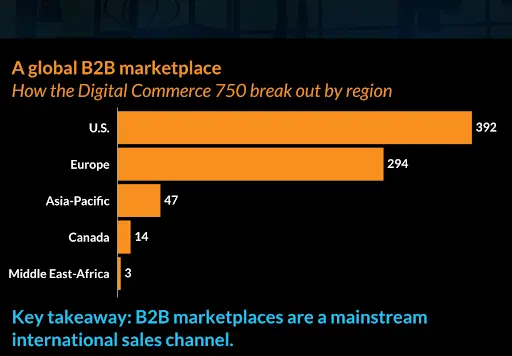
The rise in B2B marketplaces is becoming increasingly popular since they provide an avenue whereby business organizations can get direct links to suppliers, manufacturers, and distributors. Such markets make it easy for B2B buyers to experience a single-stop shop.
Being the fastest growing B2B sales channel and is on course to top $350 billion this year. Also, there are 750 diverse types of B2B marketplaces.
Example: Amazon Business, one of the biggest leaders in B2B marketplaces, brings together buyers and suppliers from almost all parts of the world with several products and services available.
And if you look at the numbers, then Amazon Business will reach a projected $67 billion GMV run rate in 2024. This makes sense that Amazon Business still dominates the B2B marketplace industry.
2. Sustainability Makes A Comeback
Sustainability is another social goal when it comes to B2B eCommerce. Businesses are adjusting to sustainable technologies to meet the current market demands.
They will be better positioned for long term growth in addition to developing a positive brand image.
Reducing carbon emissions, using recycled materials, and continuing on their path to sustainability are all examples of eco friendly sourcing. As a result, businesses can achieve cost effectiveness over time and maximize their resources.
Most significantly, audiences have a more positive opinion of companies that use sustainable resources and technologies, which guarantees greater brand loyalty.
SIG – a Swiss-based leading provider of sustainable, versatile and innovative packaging solutions. They make sure that their packages are safe, lightweight, sustainable, designed for full recyclability, etc.
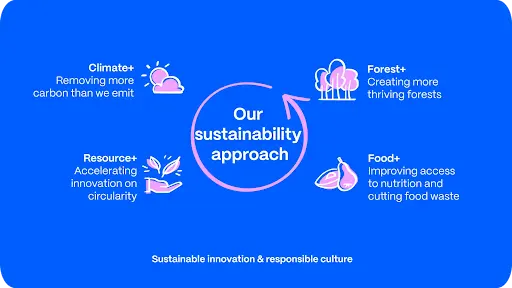
3. Headless Commerce Adoption Continues To Expand
The new trend for b2b ecommerce companies is to embrace and adopt a headless approach that enables businesses to scale quickly, maintain flexibility and move at the speed of business.
Headless b2b ecommerce separates a website’s frontend and backend systems to create a more flexible development environment.
Architects are free to build systems how they see fit, creating better and more reliable customer experiences. Headless B2B E-commerce platforms are adaptable and better suited for modern omnichannel retailers with large numbers of B2B customers.
New channels mean more customers — and, therefore, more sales. It’s clear that Headless Commerce is now a mainstay trend.
4. B2B Companies Uses AR & VR Experiences
The Augmented reality and virtual reality technologies are changing the B2B buying experience. These amazing technologies allow businesses to show products, demonstrate complex solutions, and conduct remote training and support.
Example: Boeing, a leading aerospace company, uses AR and VR technologies to provide engaging experiences for its B2B customers, enabling them to explore aircraft designs, simulate flight experiences, and receive remote training.
5. B2B Brands Use Social Media To Reach Wide Range Audience
B2B brands are increasingly leveraging social media for a larger audience and for driving eCommerce growth. Among B2B professionals, LinkedIn ranked first, selected by 44 percent.
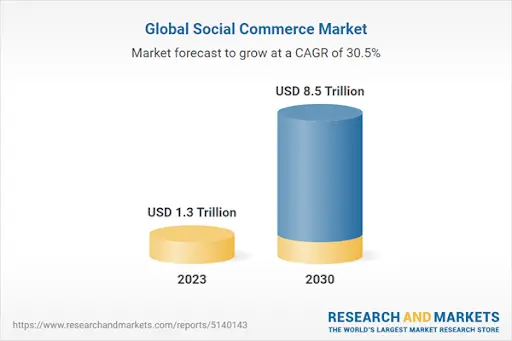
On LinkedIn, Twitter, and Facebook, businesses can reach niche industries, decision makers, and global markets. Thought leadership, product updates, and case studies help create credibility, show expertise, and attract customers.
Furthermore, influencer collaborations, webinars, and video demonstrations engage the audiences and help bring out solutions in the most effective way.
Social media also plays an important role in lead generation and real time engagement. Paid campaigns, compelling CTAs, and strategic content drive traffic to B2B eCommerce websites, while tools such as LinkedIn Ads offer measurable ROI.
Brands can interact directly with customers, answer questions, and build stronger relationships, making social platforms an effective tool for increasing visibility and conversions in the evolving B2B eCommerce landscape.
6. Mobile First Approach Will Change B2B Sales Rate
One of the emerging B2B eCommerce trends in 2025 is a shift from the desktop experience to mobile first experience.
Mobile commerce also plays an important role for B2B companies, especially as more buyers rely on smartphones for business related activities. This requires B2B providers to change and keep up with consumers’ changing preferences.
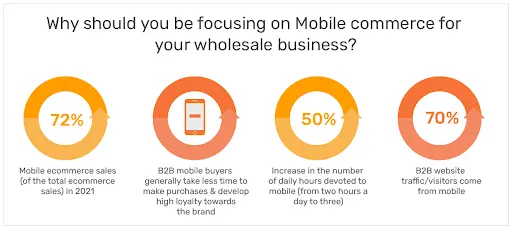
With increased transactions expected in the future through devices such as smartphones and tablets, it will become more important for businesses to offer buyers shopping experiences that are as smooth as possible.
The websites and apps should now be mobile responsive; no longer a choice but rather a necessity.
Moreover, many retailers also capture this trend and push mobile-friendly strategies. The reason is that they became aware of the fact that their decision makers were already using their smartphones for their business transactions.
Optimizing the website will not only help them streamline the process but also cut down operational costs associated with traditional on premises setups.
7. Advanced Analytics for Smarter Decision Making
Another big trend for B2B eCommerce growth is the use of Analytics. Modern eCommerce relies heavily on data.
Advanced Analytics is one of the future of B2B eCommerce trends and companies will depend on advanced analytics tools to learn more about sales patterns, high demand products, customer behavior, and optimizing inventory.
Example: A wholesale distributor could use advanced analytics to determine high demand products during specific seasons, ensuring stock availability and reducing losses from overstocking.
8. B2B Buyers Will Seek Self Service In Their Buyer Journeys
B2B buyers are increasingly expecting self service capabilities as part of their purchasing journey, valuing convenience and speed when interacting with brands.
Advanced search options, personalized dashboards, and real-time order tracking are quickly becoming must-haves for b2b websites best practices.
Businesses that enable self service tools empower buyers to research, compare, and buy on their own, increasing satisfaction and efficiency.
This shift toward digital autonomy is consistent with current trends, in which streamlining processes and reducing friction are critical to improving the buyer experience and driving sales growth.
9. Seamless Omnichannel Experiences
The modern B2B buyer explores various channels before making a purchase decision, utilizing everything from mobile apps to in person consultations.
By 2025, providing a smooth omnichannel experience will be essential. This means blending both offline and online interactions to create a cohesive customer journey.
Example: A manufacturing company might use an online portal for product research, place an order via a mobile app, and track delivery through a desktop dashboard. Every interaction should feel connected.
10. Continued Adoption Of Subscription Selling
The growing adoption of subscription based models is transforming B2B eCommerce, providing businesses with expected revenue streams and increasing customer loyalty.
B2B subscription commerce is on rise and is all set to reach $344.3 billion by 2024, with a 24 percent CAGR.
B2B brands are implementing subscription selling to meet modern buyer expectations of convenience, flexibility, and cost efficiency.
Companies can simplify purchasing processes and improve user experience by incorporating B2B websites best practices, such as automated renewals, personalized subscription plans, and tiered pricing.
This trend reflects a broader push for b2b digitalization, in which businesses use technology to provide seamless, recurring solutions that meet changing market demands.
11. New Levels Of Personalization
One size fits all approaches don’t work in the B2B eCommerce world. Buyers today expect a personalized experience, and AI is helping at scale.
Today, advanced algorithms analyze customer data and offer personalized product recommendations, dynamic pricing, and customized promotions.
For example, Adobe Commerce (Magento) makes use of AI for suggesting products based on past purchases and browsing history. A procurement manager might then get industry specific catalogs that are just so perfect for their needs – that is the power of AI.
These are key b2b e commerce trends to keep an eye on right now.
Wrapping Up
The B2B eCommerce market is about to undergo some exciting changes in 2025. Businesses that embrace these ecommerce b2b trends — from headless commerce to AI driven personalization — will not only satisfy changing customer demands but also obtain a competitive advantage in a market that is rapidly digitizing.
At Rock Technolabs, we have been helping businesses navigate the complexities of B2B eCommerce for 9+ years and offer custom solutions to let their business succeed. Being a Magento Bronze partner, our commitment to excellence has earned us the MM24IN Lightning Fast Award for one of our projects, Printer.se.
From magento b2b development, advanced analytics integration to headless commerce, security enhancement, and more—our team of experts is here to guide you step by step.
Ready to future proof your B2B eCommerce strategy? It’s time to unlock your business’s true potential! Contact Rock Technolabs today!


